Automotive-related manufacturing contributes a massive £67 billion turnover annually to the UK economy, according to statistics published by the Automotive Council, and employs more than 182,000 people within manufacturing itself, and 780,000 across the wider automotive industry. More than 25 UK-based manufacturers build over 70 models of vehicle, supported by 2,500 automotive component providers.
For the last 10 years, the Advanced Propulsion Centre (APC) – founded by the Automotive Council in partnership with the UK Government – has been providing funding and support to accelerate the UK’s transition to a net-zero automotive industry. To date, the APC has facilitated investment of £1.4 billion in the UK’s automotive sector.
In a recent article highlighting its 10th anniversary, the APC’s Head of SME Programmes described its Technology Developer Accelerator Programme (TDAP) as helping “ambitious businesses” with “support at the start of their commercialisation journey, through access to finance to develop their technology, and help them understand their route to market, protect their intellectual property, and get them ‘market ready.’”
From the above, it is clear that the APC, like most organisations that support start-ups and SMEs, recognise that protecting intellectual property (IP), particularly in emerging technology fields, is crucial. IP protection ensures that start-ups will be able to commercially exploit their inventions, giving them the confidence to invest in research and development. IP protection is also key in attracting investors and other types of funding.
But what kind of IP protection is best-suited to innovations in the automotive industry and its supply chain? Patents are traditionally seen as the most comprehensive form of protection for new or improved products, and methods of operation and manufacture. However, there are other forms of perhaps less well-known IP protection, which can be used instead of (or alongside) patents, and one example of these is registered design protection.
Unlike patents, registered designs protect the appearance of the whole or a part of a product, rather than its method of operation, or manufacture. A design application can include several views of the product (12 in the UK and 7 in the EU) from different angles, and these views can take the form of photographs, CAD images, black and white line drawings, and so on.
The example views below are taken from an EU design registration (008272892) owned by Oxford-based company Dash-CAE, for an electric vehicle. As shown, the views illustrate the vehicle from all angles, including above and below.
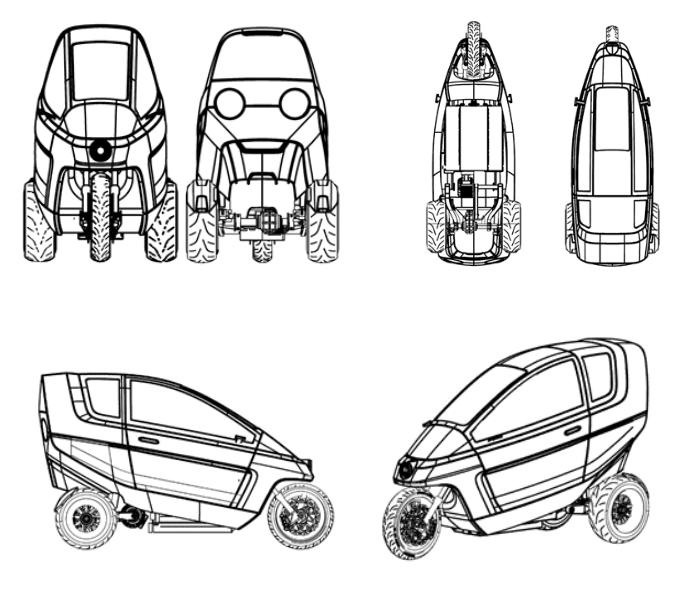
The images below are taken from two further EU design registrations covering entire vehicles. The registration on the left (002508358) was filed by Toyota Motor Corporation and the one on the right (002003244) is owned by Tata Motors Limited.

However, registered designs can also be used to protect only a part of a vehicle, making it harder to “design around” the appearance of a product to avoid infringement. This partial protection can be achieved in the UK and EU by “disclaiming” part of the image, usually using dotted lines or shading to indicate which part of the vehicle is intended to be protected.
For example, the registration on the left below (007568910) is owned by Arrival Limited. As shown, only a portion of the rear of the vehicle is shown in solid lines. The registration on the right below (002588434) was filed by London EV Company Limited and also, “disclaims” protection for part of the vehicle by using dotted lines.
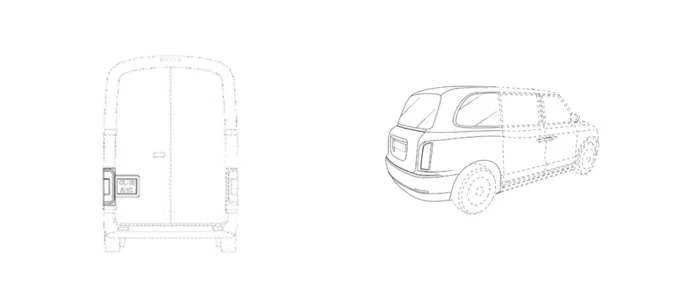
Of course, protection for parts of a vehicle can also be obtained by filing images of the part itself, separate from the vehicle, as shown in the EU design registrations below.
| This registration (000150412) owned by BMW covers a vehicle wheel. | 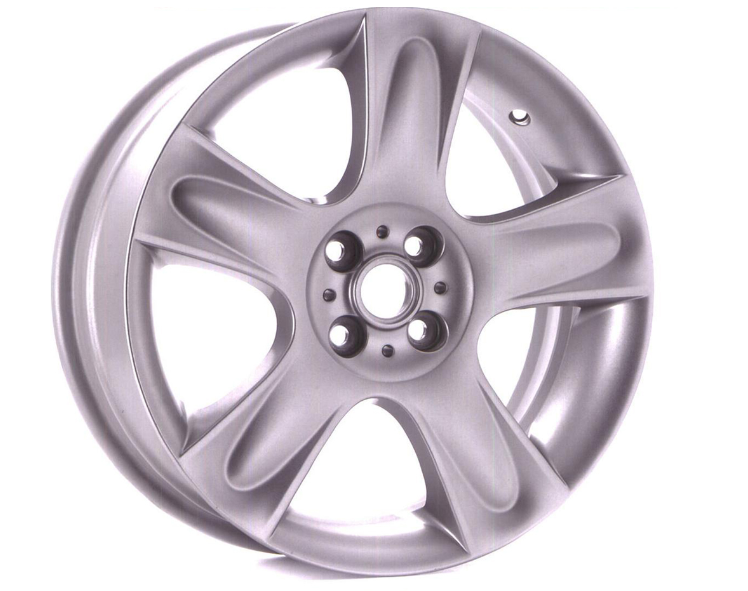 |
| This vehicle headlight is covered by a registered design (008657043) owned by Lazer Lamps Ltd, in Chelmsford. | 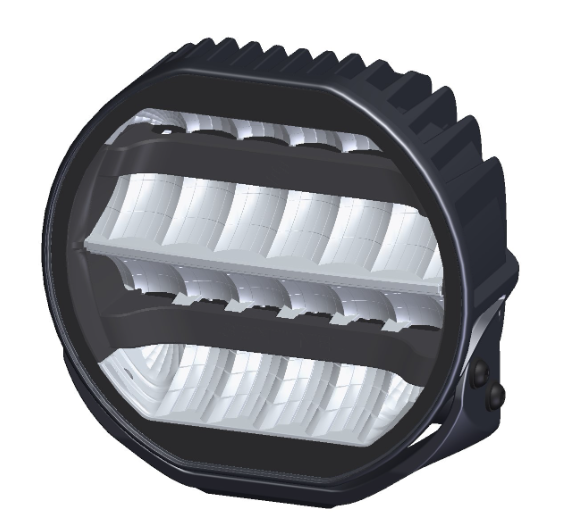 |
| An instrument panel is the subject of this registration (009143068) held by Gordon Murray Automotive Limited. | 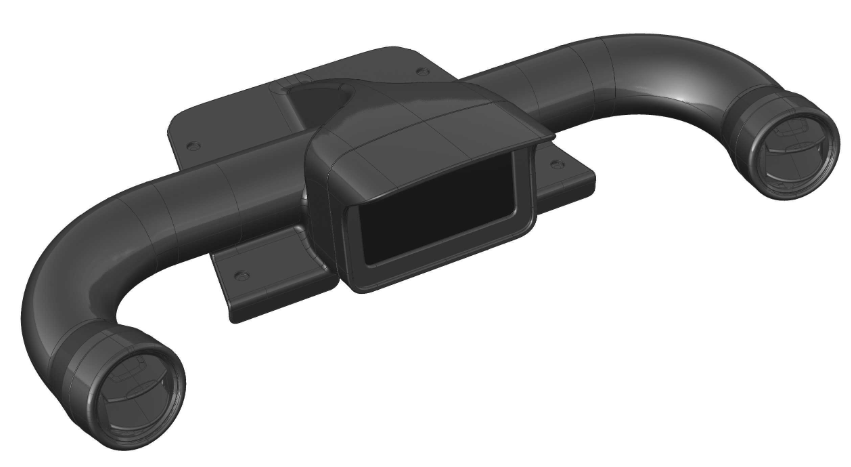 |
| Donald Graham owns a design registration (001397541) for a side view mirror. |  |
| McLaren Automotive Limited holds a registration (001608977) for this steering wheel. |  |
| Adient Luxembourg Holding S.a.r.l. has a registration (001757329) which covers vehicle seats. | 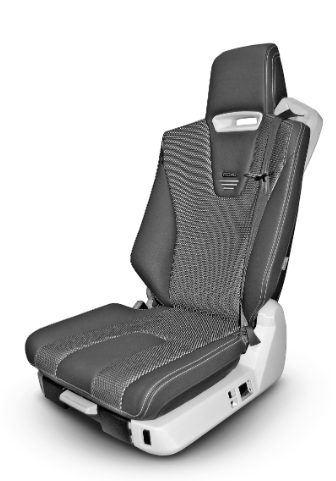 |
Automotive components such as wheels, mirrors, headlights etc. are likely to be available as individual items separate from the vehicle itself, perhaps as upgrades or replacements. But registered designs can also be used to protect parts of a vehicle that are more integral, such as body panels, as shown in the EU design registrations below.
| Silverton Holdings Limited (Overfinch) has a registration (006243085) covering a vehicle bonnet. | 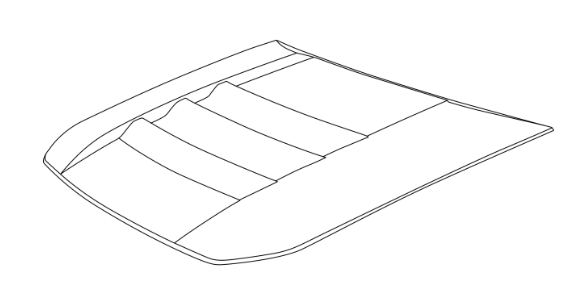 |
| This bumper is covered by a registration (002087387) owned by JLR. | 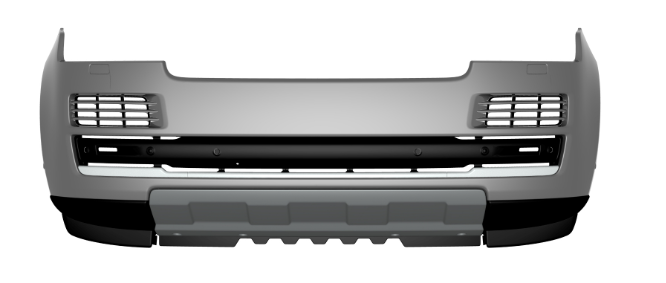 |
| Seat S.A. has a registration (002001982) covering a spoiler. | 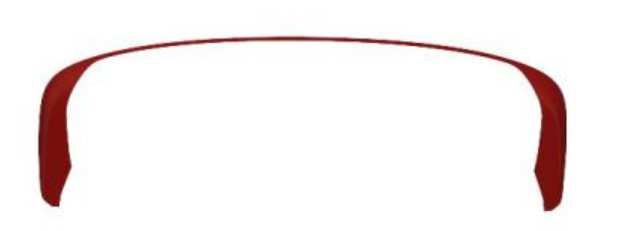 |
| Volvo has a design registration (002687764) covering this grille. | 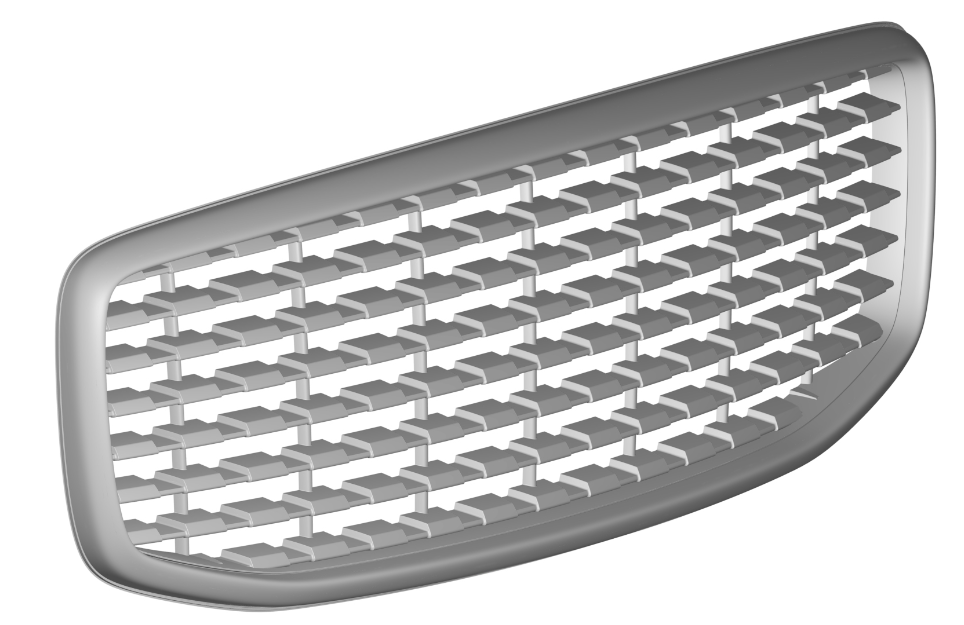 |
As illustrated above, UK and EU design registrations can be used by the automotive industry to protect the design of an entire vehicle, parts of a vehicle and individual components, all of which can be considered as “traditional”, physical products.
But registered designs can be even more flexible. They can be used to protect digital products, such as graphical user interfaces, technical drawings, logos, webpage layouts, and typefaces. The registered design below (005886868) protects a logo owned by Volkswagen.

Registered designs in the EU and UK can also be used to protect “layouts”, such as the interior design of a store, or that of a vehicle.
As illustrated below, Aston Martin Lagonda Limited has a design registration (006157020) which covers a “vehicle interior”; here, a red line is used to mark the features for which design protection has been obtained.
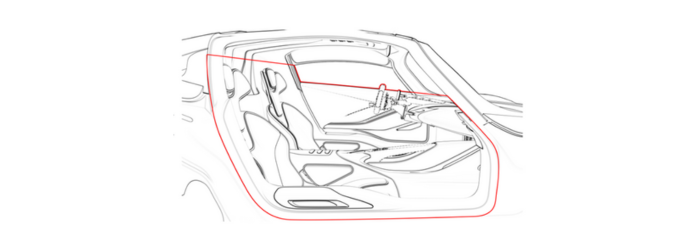
INEOS Automotive Limited also has a registration (008604581) for an interior of a vehicle.
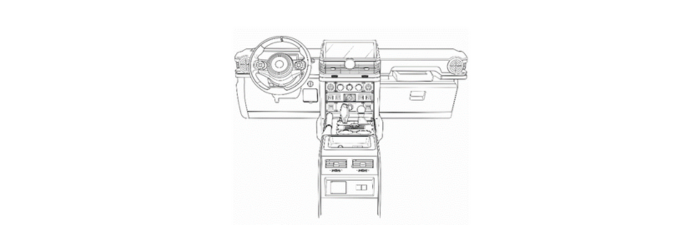
From the above, we can see that UK and EU registered designs can be used to provide comprehensive cover for all aspects of vehicle and vehicle component design. But what about aspects of a vehicle that are less “attractive” and more “technical”?
While registered designs are of course very useful in providing IP protection for “attractive” products, such as cool cars, stylish spoilers and polished panels, there is in fact no requirement for a product protected by a registered design to be aesthetically pleasing as such. Instead, the design of the product must be new and have individual character. There are some limitations: it is not possible to protect features of a product that are chosen solely for performing a technical function, or necessary for the product to fit or connect with another product.
Additionally, EU and UK design law prevents protection being obtained for component parts of complex products that are not visible during “normal use”. “Normal use” is generally defined as excluding repair, servicing or maintenance. Recent case law suggests that this exclusion does not apply to consumables, such as vacuum cleaner bags and toners, however. Whether a product is deemed to be a component part of a “complex product”, and if so, whether it is “visible during normal use” would be a matter for a court to decide, after registration.
And EU design law may soon change; a repair clause for spare parts in proposed legislation means design protection will no longer apply to ‘must-match’ spare parts, where the appearance of the spare part “must-match” that of the original part. This repair clause is aimed at increasing fair competition in the spare parts market, and will only apply where the part is used to restore the product to its original appearance.
The following registered EU designs cover vehicle components which may perhaps be less aesthetically pleasing, but well-designed nonetheless.
| Belly Fender Limited has a registration (008029649) covering this vehicle bodywork. | 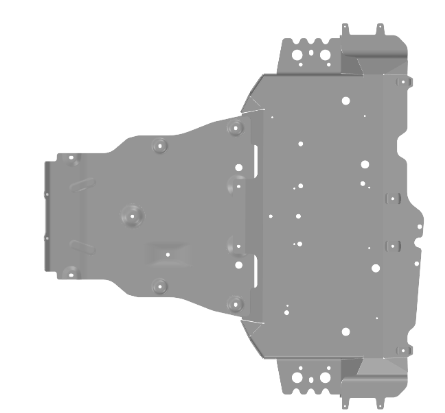 |
| This electric vehicle battery is covered by a design registration (008084313) filed by Arrival Ltd. | 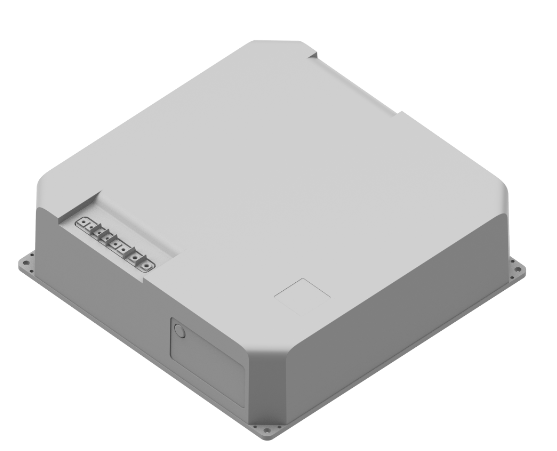 |
There is another advantage to UK and EU registered designs – they are much faster to obtain than a patent.
Registered design applications filed in the UK and EU are not examined for novelty or individual character before registration – these issues are only considered if a third party applies to invalidate a design after registration. As a result, barring any issues such as a lack of consistency between the different views, a UK or EU design application can often be registered within a few weeks, making them much faster and less expensive to obtain than a patent.
A further advantage is that, in both the UK and the EU, there is a 12-month grace period in which you can disclose your design and still obtain valid registered design protection. After registration, payment of renewal fees every five years will keep the design registration in force for up to 25 years, if needed.
Considering the above, it comes as no surprise to find that many designers of vehicles and vehicle components have been taking advantage of the UK and EU registered design system to obtain IP protection for their automotive innovations.
As a final example of a (perhaps unexpected) registered design from the automotive industry, Silverstone Circuits Ltd has a (now-lapsed) design registration (004114478) for the below racing circuit.

The Advanced Propulsion Centre’s latest Technology Developer Accelerator Programme (TDAP) has just closed. Once again, the programme will offer support on intellectual property management, reinforcing the key role of IP, such as patents, registered designs and trade marks, in enabling SMEs and start-ups to bring their innovative products to market.
For comprehensive advice on registered designs, including how to obtain the best protection through careful filing strategy and choice of views, get in touch with one of Marks & Clerk’s design attorneys today.



